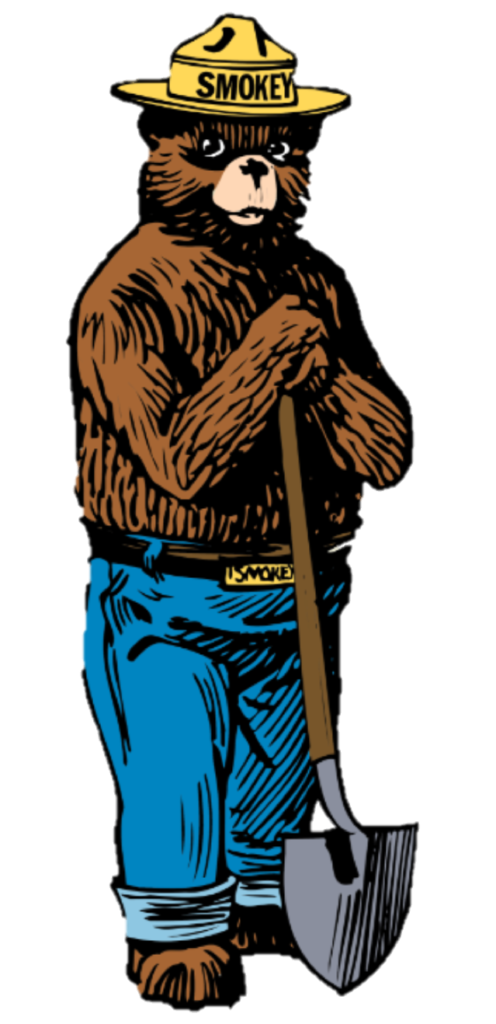Who is Smokey Bear?
Nearly nine out of every 10 wildfires in the United States are human-caused.
Through the Cooperative Forest Fire Prevention (CFFP) Committee, NASF works with the USDA Forest Service and the Ad Council to manage and promote Smokey Bear and his message of wildfire prevention. Click here to get to know the CFFP.
The CFFP Committee was authorized under the Smokey Bear Act of May 23, 1952. The resulting Smokey Bear campaign is the longest running public service announcement campaign in United States history. To learn more about Smokey Bear, visit SmokeyBear.com. To schedule a Smokey Bear appearance and/or wildfire prevention presentation, please contact your state forestry agency.
For questions about the Smokey Bear campaign and/or CFFP, please contact the Smokey Bear team at SmokeyBearTeam@adcouncil.org. For specific inquiries, reach out to the most relevant partner organization below:
Sheridan Davis
Communications Director
National Association of State Foresters
sdavis@stateforesters.org
Mandy Scott
National Wildfire Prevention Program Manager
USDA Forest Service
Amanda.scott@usda.gov
Trace Danicich
Group Campaign Director
Ad Council
tdanicich@adcouncil.org
Prevent Wildfires with Smokey Bear
Get your smokey on: SPark a change, not a wildfire.
Since 1944, the Smokey Bear Wildfire Prevention Campaign has helped millions of Americans realize their role in preventing wildfires. Today, Smokey’s image is recognized by 8 out of 10 Americans, but his work to prevent wildfires is far from over. Smokey needs your help in preventing devastating, unplanned, and unwanted fires. How will you care for the world around you by sparking change, not wildfires? Do your part by trying these tips:

Maintain your equipment. Today most equipment requires the use of a spark arrestor. A spark arrestor is a mechanical device that traps or destroys hot exhaust particles that have been released from an internal combustion engine. While spark arrestors are not 100% effective, they can greatly reduce the risk of starting a wildfire. Learn more about proper equipment maintenance.
Extinguish your campfire. If a campfire is not properly extinguished, smoldering coals and embers can reignite a fire when you aren’t around. Learn the proper steps for campfire safety.
Learn before you burn. When burning debris, it is critical to comply with local regulations. Weather fluctuations, such as sudden gusts of wind, could make debris burning spark a wildfire. State forestry agencies, local fire departments and other entities can help you determine if the weather is safe enough to burn. Learn about debris burning.
Follow Smokey Bear on social media. Smokey Bear shares wildfire prevention tips and news on his Twitter, Facebook, and Instagram. Get your Smokey on by using the hashtag #OnlyYou when you share your wildfire prevention story!
Help spread Smokey’s word in your classroom or throughout your community. Purchase Smokey Bear educational materials, giveaway items, gifts, and more in NASF’s Store. Free resources for teachers are also available on SmokeyBear.com and below!

